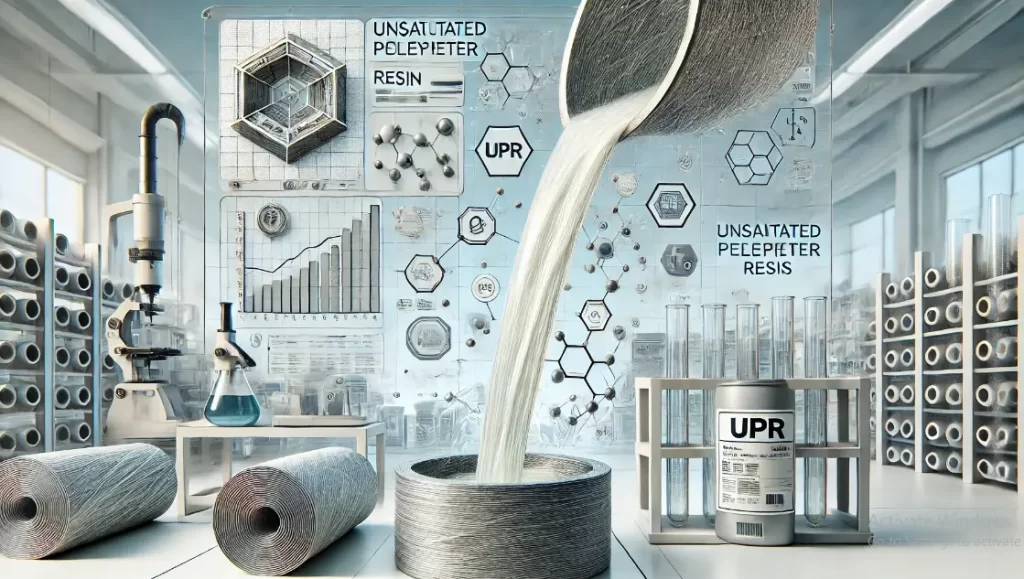
The unsaturated polyester resin (UPR) market is undergoing significant transformation as industries around the world strive to adopt more sustainable practices. As UPR is widely used in industries like automotive, construction, and marine for its durability and strength, its environmental impact has come under scrutiny. One of the major challenges is the difficulty in recycling UPR, which has traditionally been a barrier to implementing a circular economy in this sector.
However, as sustainability becomes a top priority, efforts to integrate UPR into a circular economy are gaining traction. The idea of a circular economy revolves around minimizing waste, extending the life of products, and reusing materials wherever possible. For UPR, this means rethinking how the material is produced, used, and ultimately disposed of. Let’s explore how the UPR industry is shifting towards more sustainable practices, focusing on recycling innovations and circular economy trends.
The global unsaturated polyester resins market is valued at USD 8.50 billion in 2024 and is projected to reach USD 10.29 billion by 2029, growing at 3.9% cagr from 2024 to 2029.
Recycling Challenges with UPR
One of the fundamental properties of unsaturated polyester resins is their ability to create strong, thermoset materials once cured. These materials are highly valued for their strength, but their inherent structure makes them difficult to recycle. Unlike thermoplastics that can be melted down and reshaped, thermosetting resins like UPR do not revert to a malleable state after curing, making traditional recycling methods ineffective.
In addition to the challenge posed by its chemical structure, UPR is often combined with glass fibers and other additives to create composite materials, further complicating the recycling process. Separating these components at the end of a product’s life is not only difficult but also costly, leading to large amounts of UPR-based materials ending up in landfills.
Circular Economy and UPR: Shifting Towards Sustainability
Despite these challenges, the drive toward a circular economy is leading to significant changes in how UPR is being approached. A circular economy model emphasizes keeping materials in use for as long as possible, recovering and regenerating materials at the end of their life cycle. For UPR, this shift is taking several forms:
- Designing for End-of-Life Recovery:
One of the key principles of a circular economy is designing products with their entire lifecycle in mind, including what happens after their useful life. In the UPR market, this involves developing resins that are easier to recycle or disassemble once they reach the end of their use. This shift in product design requires collaboration across the supply chain, from manufacturers to recyclers, to ensure that products can be effectively processed for reuse. - Chemical Recycling Innovations:
While traditional mechanical recycling methods fall short for UPR, chemical recycling offers a promising alternative. Through chemical recycling, UPR can be broken down into its original components, which can then be reused to produce new resins. This approach, though still in the early stages of development, has the potential to significantly reduce waste. Technologies like pyrolysis and solvolysis are being researched as potential solutions to chemically break down UPR composites. While these processes currently require significant energy input, further innovation could make them more economically and environmentally viable. - Bio-Based UPR Development:
To reduce reliance on fossil fuels and enhance recyclability, bio-based unsaturated polyester resins are becoming a topic of interest. These resins, derived from renewable sources like plant-based oils, offer an eco-friendlier alternative. Although still relatively new, bio-based UPRs could help lower the environmental footprint of resin production while making the material more compatible with circular economy practices. Researchers are actively exploring how bio-based UPRs can be integrated into a fully circular lifecycle, from production to recycling. - Hybrid Composites for Enhanced Recyclability:
Another innovative trend is the development of hybrid composites that blend UPR with thermoplastics, which are easier to recycle. By incorporating thermoplastics into the resin, manufacturers can produce materials that offer the same durability and strength as traditional UPR but with improved recyclability. These hybrid composites are gaining interest in industries where both performance and sustainability are critical, such as automotive and aerospace.
Market and Regulatory Influences on UPR Recycling
The shift toward more sustainable UPR practices is not just being driven by technological advancements but also by market demands and regulatory pressures. Consumers are becoming increasingly aware of the environmental impact of the products they use, pushing industries to adopt greener practices. In response, companies that utilize UPR are looking for ways to improve the sustainability of their products.
In addition, governments around the world are enacting stricter regulations on the disposal of plastics and other non-recyclable materials. For example, the European Union’s Circular Economy Action Plan is setting ambitious targets for recycling and waste reduction, including guidelines for plastics. These regulations are encouraging companies to invest in research and development for more sustainable UPR products and recycling methods.
The movement toward a circular economy in the UPR market is still in its early stages, but the potential for transformation is clear. As research and development continue to advance, the industry is expected to see significant improvements in the recyclability of UPR materials. Chemical recycling methods, bio-based resins, and hybrid composites all offer promising solutions that could drastically reduce the environmental impact of UPR.
For companies in the UPR industry, embracing circular economy principles is not only a matter of regulatory compliance but also a strategic opportunity. Those that prioritize sustainability and invest in recycling innovations will be well-positioned to meet growing market demands for greener products. As the push for sustainability continues, the UPR market is poised for significant change, leading to a more sustainable and environmentally responsible future.
